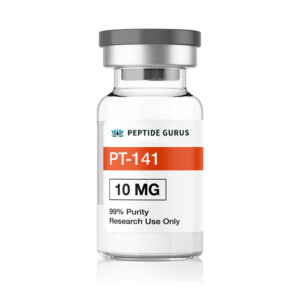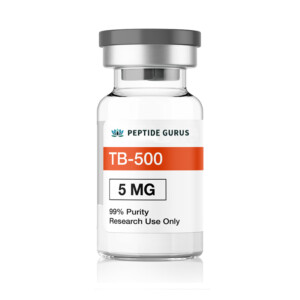Retatrutide vs clinical grade peptides is a topic of growing interest within the pharmaceutical and medical research communities. Retatrutide, a novel therapeutic agent, is being compared to established clinical grade peptides to assess its efficacy, safety, and potential applications. This comparison is crucial as it helps in understanding the relative advantages and limitations of Retatrutide in various clinical settings.
Retatrutide is a synthetic peptide that has shown promise in preclinical studies for its potential to treat a range of conditions. Unlike some traditional clinical grade peptides, Retatrutide is designed to have enhanced stability and bioavailability, making it a potentially more effective therapeutic option. Researchers are particularly interested in its applications in metabolic disorders, where it may offer significant benefits over existing treatments.
Clinical grade peptides, on the other hand, have a well-established history of use in medical treatments. These peptides are used in a variety of therapeutic areas, including endocrinology, oncology, and infectious diseases. The rigorous standards for clinical grade peptides ensure their safety and efficacy, which is why they remain a cornerstone of peptide-based therapies.
One of the key differences between Retatrutide vs clinical grade peptides is their molecular structure. Retatrutide is engineered to resist enzymatic degradation, which often limits the effectiveness of traditional peptides. This structural modification allows Retatrutide to maintain its therapeutic activity for a longer duration, potentially leading to improved patient outcomes.
Another important aspect of Retatrutide vs clinical grade peptides is their pharmacokinetics. Retatrutide’s enhanced bioavailability means that it can achieve therapeutic levels in the bloodstream more efficiently than some clinical grade peptides. This can translate to lower dosages and reduced side effects, which are significant advantages in a clinical setting.
The clinical applications of Retatrutide vs clinical grade peptides also differ in some respects. While clinical grade peptides have a broad range of uses, Retatrutide is being specifically investigated for its role in treating metabolic disorders such as obesity and type 2 diabetes. Early studies suggest that Retatrutide may offer superior efficacy in these areas, potentially providing a new avenue for treatment.

Safety profiles are another critical area of comparison between Retatrutide vs clinical grade peptides. Clinical grade peptides have a long track record of safety, supported by extensive clinical trials and post-marketing surveillance. Retatrutide, being a newer agent, is still undergoing rigorous testing to establish its safety profile. However, initial data is promising, indicating that Retatrutide may have a favorable safety profile similar to that of clinical grade peptides.
The manufacturing processes for Retatrutide vs clinical grade peptides also present some differences. Clinical grade peptides are typically produced using well-established methods that ensure high purity and consistency. Retatrutide, however, may require more advanced manufacturing techniques to achieve its enhanced stability and bioavailability. These differences in production can impact the cost and accessibility of these therapies.
Regulatory considerations are also important when comparing Retatrutide vs clinical grade peptides. Clinical grade peptides have already undergone extensive regulatory scrutiny, making them readily available for clinical use. Retatrutide, on the other hand, is still in the process of gaining regulatory approval. This means that while it shows promise, it may take some time before Retatrutide becomes widely available to patients.
The cost-effectiveness of Retatrutide vs clinical grade peptides is another factor that healthcare providers must consider. While Retatrutide’s advanced properties may offer superior therapeutic benefits, these advantages could come at a higher cost. Clinical grade peptides, with their established manufacturing processes and regulatory approvals, may be more affordable in the short term.
Patient adherence is a significant consideration in the Retatrutide vs clinical grade peptides debate. Retatrutide’s potential for lower dosing frequencies and reduced side effects could improve patient adherence compared to some clinical grade peptides. Better adherence typically leads to better treatment outcomes, making this an important factor in the overall assessment of these therapies.
The future research directions for Retatrutide vs clinical grade peptides are exciting and varied. Ongoing clinical trials and studies will provide more data on the efficacy, safety, and optimal use of Retatrutide. Comparative studies with clinical grade peptides will help to clarify the specific advantages and potential limitations of Retatrutide in different therapeutic contexts.
The role of personalized medicine in the context of Retatrutide vs clinical grade peptides is also worth exploring. Personalized medicine aims to tailor treatments to the individual characteristics of each patient. Retatrutide’s unique properties may make it particularly well-suited to personalized treatment approaches, potentially offering more effective and targeted therapies.
Another interesting area of investigation is the potential for combination therapies involving Retatrutide vs clinical grade peptides. Combining these agents with other therapeutic modalities could enhance their effectiveness and provide new treatment options for patients with complex conditions. This approach may also help to mitigate any limitations associated with each individual therapy.
The patient population that could benefit from Retatrutide vs clinical grade peptides is another important consideration. Identifying the specific patient groups that are most likely to respond to these therapies will be crucial for optimizing their use. This involves not only clinical characteristics but also genetic and molecular markers that can predict response to treatment.
The impact of Retatrutide vs clinical grade peptides on healthcare systems is also a key consideration. The introduction of new therapies like Retatrutide can have significant implications for healthcare costs, resource allocation, and treatment paradigms. Understanding these impacts will be important for healthcare providers and policymakers as they integrate these new options into clinical practice.

The ethical considerations of developing and using Retatrutide vs clinical grade peptides should not be overlooked. Ensuring that these therapies are accessible, affordable, and used appropriately is essential. This includes addressing potential disparities in access to new treatments and ensuring that all patients benefit from advances in peptide-based therapies.
The environmental impact of producing Retatrutide vs clinical grade peptides is another factor to consider. The manufacturing processes for these agents can have varying environmental footprints. Efforts to minimize the environmental impact of production will be important for the sustainable development of these therapies.
The role of patient education in the context of Retatrutide vs clinical grade peptides is also critical. Educating patients about the benefits, risks, and proper use of these therapies can enhance treatment outcomes and ensure that patients are well-informed about their treatment options. This includes providing clear and accessible information about new therapies like Retatrutide.
The collaboration between researchers, healthcare providers, and patients is essential for the successful development and implementation of Retatrutide vs clinical grade peptides. Collaborative efforts can help to accelerate research, improve clinical practices, and ensure that patients receive the best possible care. This includes sharing data, resources, and expertise to advance the field of peptide-based therapies.
In conclusion, the comparison of Retatrutide vs clinical grade peptides offers valuable insights into the future of peptide-based therapies. While Retatrutide shows significant promise with its enhanced stability, bioavailability, and potential applications, clinical grade peptides continue to play a crucial role in medical treatments. Ongoing research and collaboration will be key to unlocking the full potential of these therapies and improving patient outcomes.
All products on this site are for Research, Development use only. Products are Not for Human consumption of any kind.
The statements made within this website have not been evaluated by the US Food and Drug Administration or HEALTH CANADA. The statements and the products of this company are not intended to diagnose, treat, cure or prevent any disease.
PeptideGurus is a chemical supplier. PeptideGurus is not a compounding pharmacy or chemical compounding facility as defined under 503A of the Federal Food, Drug, and Cosmetic act. Peptide Sciences is not an outsourcing facility as defined under 503B of the Federal Food, Drug, and Cosmetic act.

